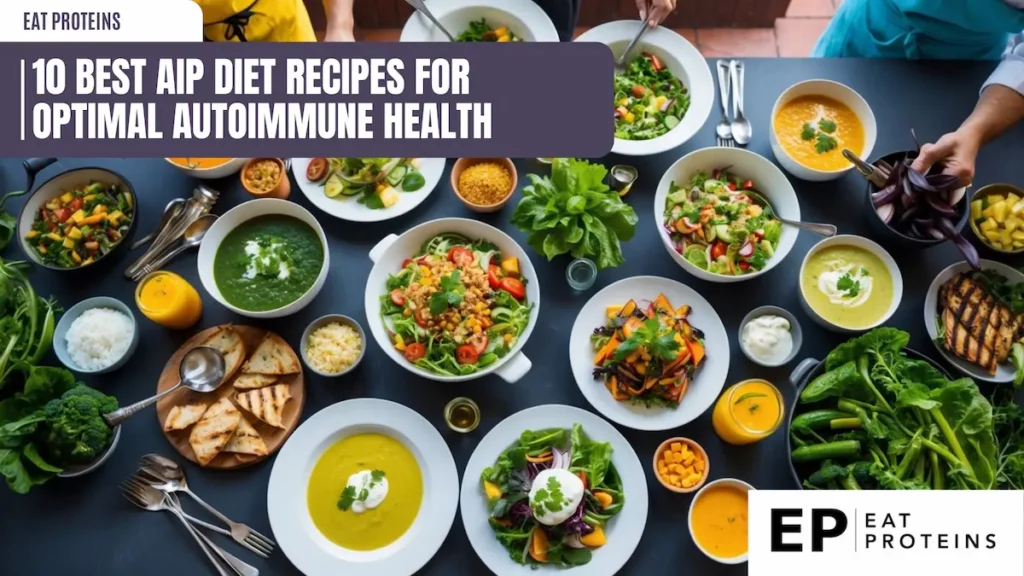
I’ve found some great recipes for those following the Autoimmune Protocol (AIP) diet. The AIP diet can be tricky to navigate, but with the right recipes, it becomes much easier to stick to. These dishes are not only AIP-compliant but also tasty and satisfying.
The AIP diet can help reduce inflammation and eliminate food triggers for people with autoimmune conditions. I’ve selected 10 of the best AIP recipes that are simple to make and full of nutrients. These meals will keep you on track with your health goals while still enjoying your food.
1. AIP Spaghetti Squash Bolognese
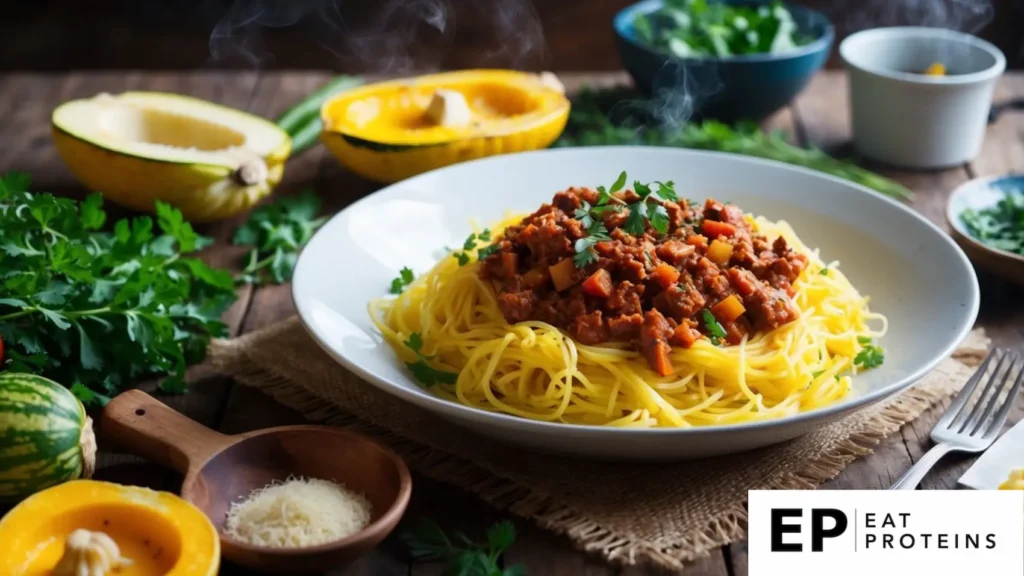
I love this AIP-friendly twist on a classic Italian dish. It’s perfect for those following the Autoimmune Protocol diet. Spaghetti squash replaces traditional pasta, making it grain-free and nutrient-dense.
This recipe is easy to make and takes about 45 minutes total. I start by cutting a spaghetti squash in half and roasting it in the oven for 30-35 minutes at 400°F.
While the squash cooks, I prepare the bolognese sauce. I brown 1 pound of ground beef in a large skillet, then add diced onions, garlic, and carrots. I cook this for 5-7 minutes until the veggies soften.
Next, I stir in 1 cup of pureed tomatoes (nomato sauce for strict AIP), along with Italian herbs like basil and oregano. I let the sauce simmer for 15-20 minutes to develop flavor.
Once the squash is done, I use a fork to scrape out the spaghetti-like strands. I top the squash with the bolognese sauce and enjoy a comforting, AIP-compliant meal.
2. Coconut Milk Chicken Curry

Coconut milk chicken curry is a tasty and nutritious AIP-friendly dish. It combines tender chicken with creamy coconut milk and aromatic spices.
I find this recipe easy to make, even for beginners. It takes about 30 minutes to prepare and cook.
To start, I heat coconut oil in a large pan over medium heat. Then I add diced onions and cook for 3-4 minutes until soft.
Next, I add minced garlic and ginger, stirring for 1 minute. I add chicken pieces and cook for 5-6 minutes until browned.
I pour in coconut milk and bring it to a simmer. Then I add turmeric, salt, and other AIP-compliant spices.
The curry simmers for 15-20 minutes until the chicken is fully cooked. I stir occasionally to prevent sticking.
Before serving, I taste and adjust the seasoning if needed. This curry goes well with cauliflower rice or sweet potato mash.
3. Sweet Potato Shepherd’s Pie
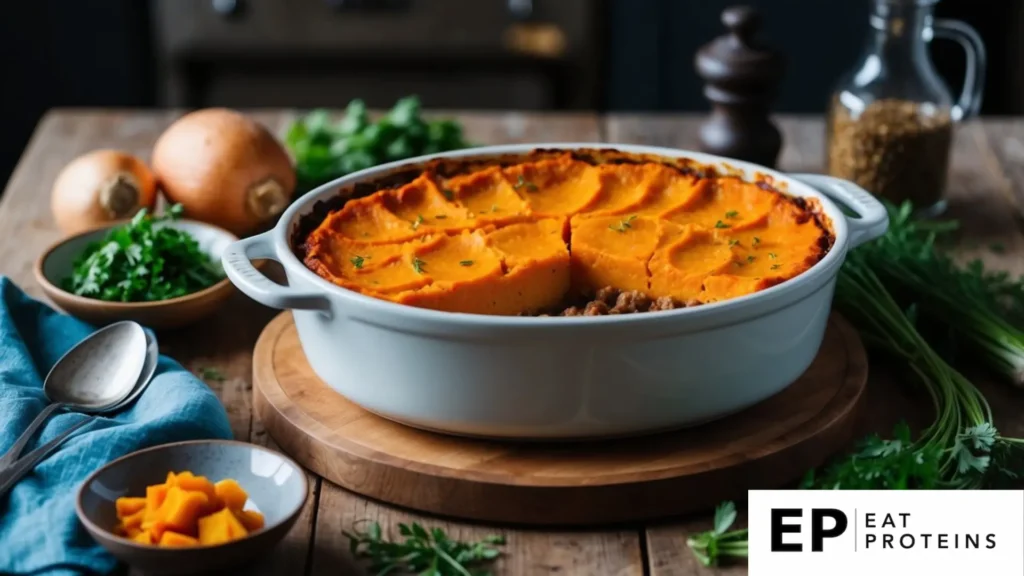
Sweet Potato Shepherd’s Pie is a comforting dish that fits perfectly into an AIP diet. It’s a twist on the classic recipe, using sweet potatoes instead of regular ones.
I find this dish easy to make and full of flavor. The sweet potatoes add a nice balance to the savory meat filling.
To start, I cook ground meat (like lamb or beef) with AIP-friendly veggies for about 10 minutes. I usually use carrots, onions, and celery.
Next, I prepare the sweet potato topping. I boil peeled and chopped sweet potatoes for about 15 minutes until they’re soft.
I mash the cooked sweet potatoes and spread them over the meat mixture in a baking dish. Then, I bake the pie in a preheated oven at 375°F (190°C) for 25-30 minutes.
The result is a warm, hearty meal that’s both nutritious and AIP-compliant. It’s a great option for those looking to stick to their diet without sacrificing taste.
4. Paleo Bacon-Wrapped Meatloaf
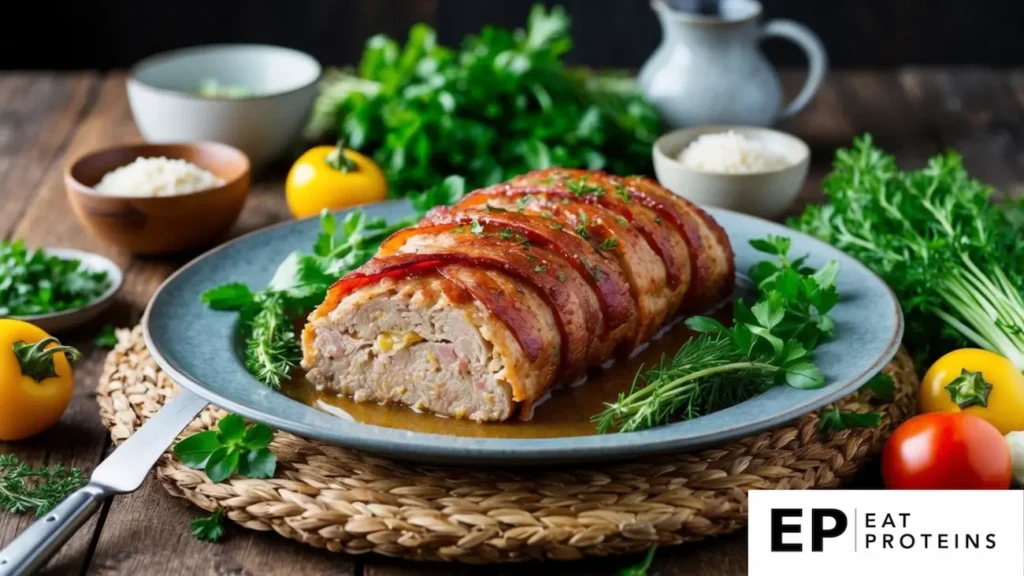
Paleo Bacon-Wrapped Meatloaf is a tasty dish that fits the Autoimmune Protocol (AIP) diet. It’s a protein-rich meal made with ground meat and wrapped in bacon.
I find this recipe easy to make. It takes about 15 minutes to prep and 1 hour to cook. The ingredients are simple and AIP-friendly.
To make it, I mix 2 pounds of ground beef with finely chopped vegetables like onions and carrots. I add some AIP-approved seasonings for flavor.
Next, I shape the mixture into a loaf. Then I wrap it with 8-10 slices of sugar-free bacon. This adds extra flavor and keeps the meatloaf moist.
I bake it in a 350°F oven for about 1 hour. The bacon should be crispy and the internal temperature should reach 160°F.
This meatloaf is filling and satisfying. It’s great for dinner and makes good leftovers too. I like to serve it with some AIP-friendly vegetables on the side.
5. Garlic-Rosemary Lamb Chops
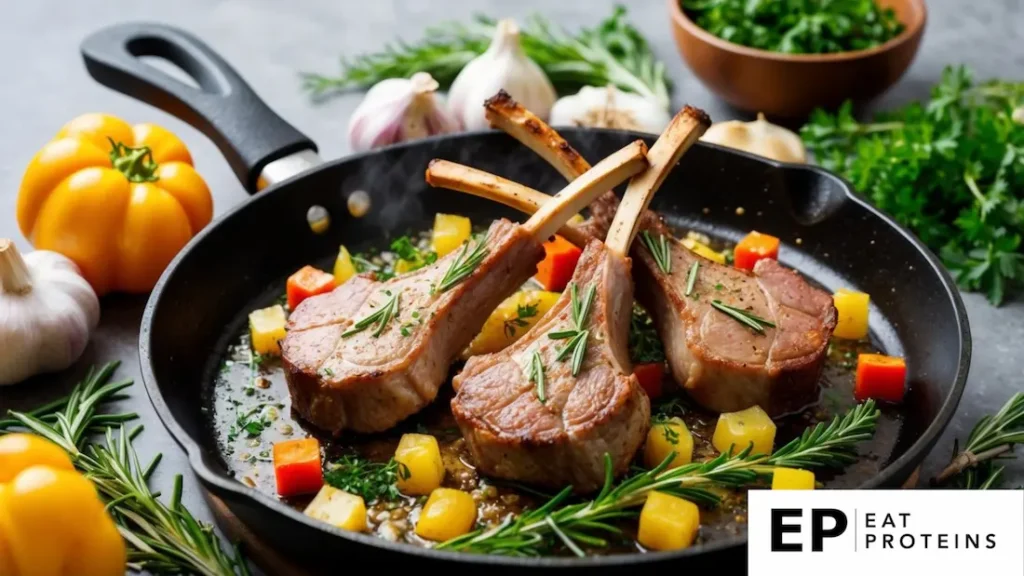
I find Garlic-Rosemary Lamb Chops to be a tasty and simple AIP-friendly dish. Lamb chops are cuts of meat from the rib, loin, or shoulder of a lamb.
This recipe is easy to make and takes about 20 minutes from start to finish. I start by seasoning the lamb chops with sea salt, minced garlic, and fresh rosemary.
Next, I heat a skillet over medium-high heat and add a tablespoon of AIP-compliant cooking fat, like coconut oil or olive oil.
I cook the lamb chops for about 3-4 minutes on each side for medium-rare. The exact time depends on the thickness of the chops.
After cooking, I let the chops rest for 5 minutes before serving. This allows the juices to redistribute, making the meat more tender and flavorful.
These Garlic-Rosemary Lamb Chops pair well with AIP-friendly sides like roasted vegetables or a fresh salad. The dish is rich in protein and provides a good source of nutrients.
6. AIP Apple Cinnamon Muffins
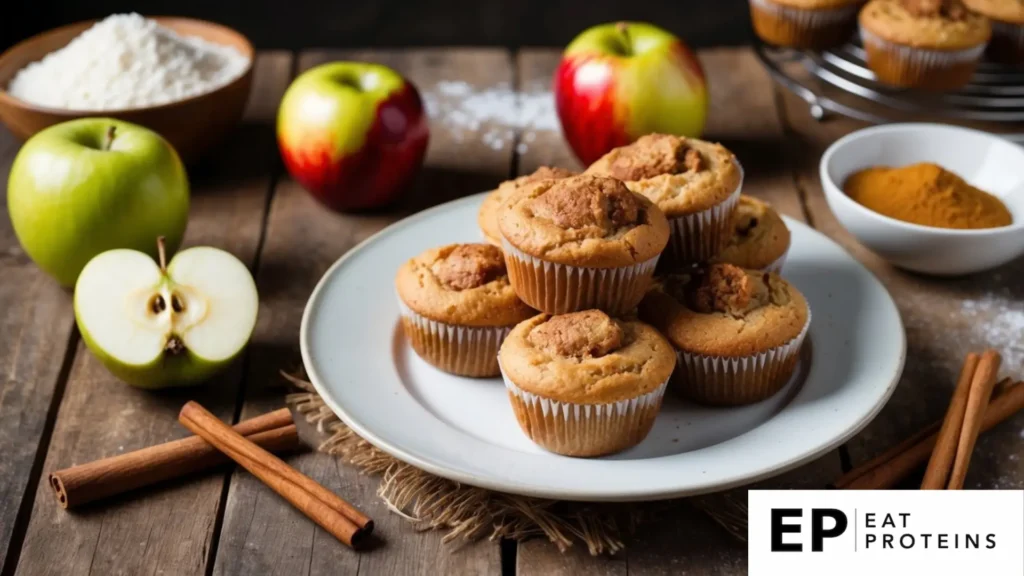
I love these AIP Apple Cinnamon Muffins as a tasty treat that follows the autoimmune protocol diet. They’re made without grains, dairy, or eggs, using coconut flour as the base.
These muffins are pretty easy to make. I can whip up a batch in about 30 minutes total. The recipe usually yields 10-12 muffins, perfect for a week of snacks.
To make them, I start by mixing the dry ingredients – coconut flour, cinnamon, and baking soda. In a separate bowl, I combine mashed banana, melted coconut oil, and honey.
Next, I fold in diced apples. The batter goes into muffin cups, filling each about 2/3 full. They bake at 350°F for 20-25 minutes until golden brown.
These AIP-friendly muffins are moist and flavorful. The apple and cinnamon give them a classic taste, while the coconut flour keeps them compliant with the diet.
7. Butternut Squash Soup
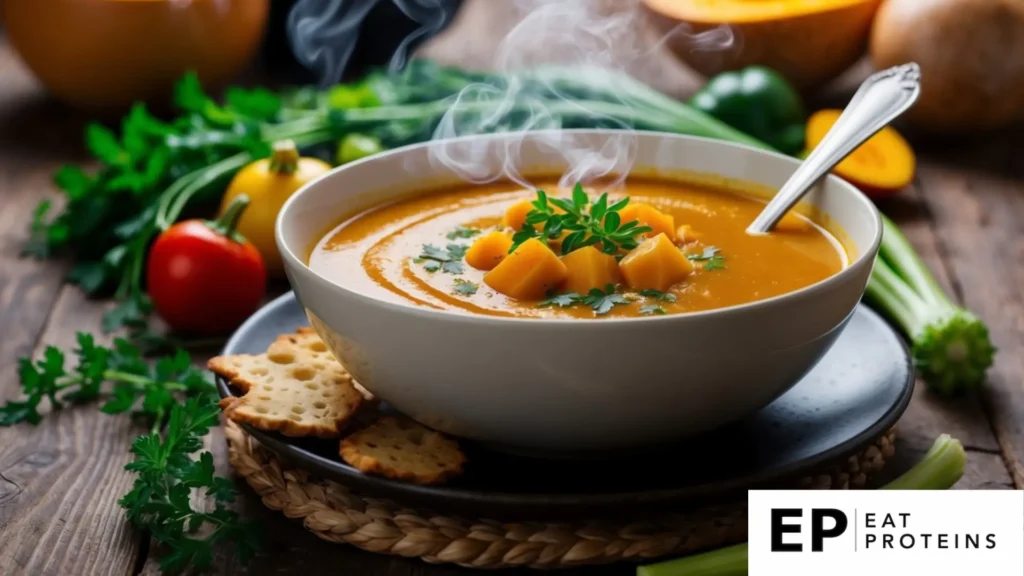
Butternut squash soup is a creamy, comforting dish that’s perfect for the AIP diet. I find it easy to make and packed with nutrients.
To start, I peel and cube one medium butternut squash. I also chop an onion and a few cloves of garlic.
In a large pot, I sauté the onion and garlic in coconut oil for about 5 minutes. Then I add the squash cubes and 4 cups of bone broth.
I bring the mixture to a boil, then reduce heat and simmer for 20-25 minutes until the squash is tender. After that, I blend everything until smooth.
For extra flavor, I like to add a pinch of sea salt and some fresh herbs like thyme or sage. The soup can be stored in the fridge for up to 5 days, making it great for meal prep.
This nutrient-rich soup is not only delicious but also helps support the body’s healing process on the AIP diet.
8. AIP Stuffed Peppers

AIP stuffed peppers are a tasty and nutritious meal that fits the autoimmune protocol diet. They’re made by filling bell peppers with AIP-compliant ingredients.
I find these peppers easy to prepare. They take about 45 minutes total, including 30 minutes of baking time.
To make them, I start by cutting 4 bell peppers in half and removing the seeds. Then I cook 1 pound of ground beef with AIP-friendly seasonings like garlic and herbs.
Next, I mix the cooked beef with diced vegetables like zucchini and carrots. I stuff this mixture into the pepper halves.
I bake the stuffed peppers at 375°F for about 30 minutes until the peppers are tender. Nutrient-dense food like this is key on the AIP diet.
These peppers are versatile. I can change up the filling with different meats or vegetables for variety. They also reheat well, making great leftovers for busy days.
9. Ginger-Turmeric Salmon

Ginger-turmeric salmon is a tasty and healthy dish that fits the AIP diet. This recipe combines anti-inflammatory spices with omega-3 rich salmon.
I find this meal easy to prepare. It takes about 30 minutes from start to finish. The recipe serves 2-4 people, depending on portion size.
To make it, I start with a 1-pound salmon fillet. I mix 1 tablespoon grated ginger, 1 teaspoon ground turmeric, 2 tablespoons olive oil, and a pinch of salt.
Next, I spread this mixture over the salmon. Then I let it sit for 10 minutes to soak up the flavors.
I preheat the oven to 400°F (200°C). I place the salmon on a baking sheet lined with parchment paper.
The salmon goes in the oven for 12-15 minutes. It’s done when it flakes easily with a fork.
I serve the salmon hot. It goes well with a side of roasted vegetables or a fresh salad.
This dish is full of nutrients. The ginger and turmeric add a warm, spicy flavor. The salmon comes out moist and flaky.
10. Zoodle Alfredo with Chicken
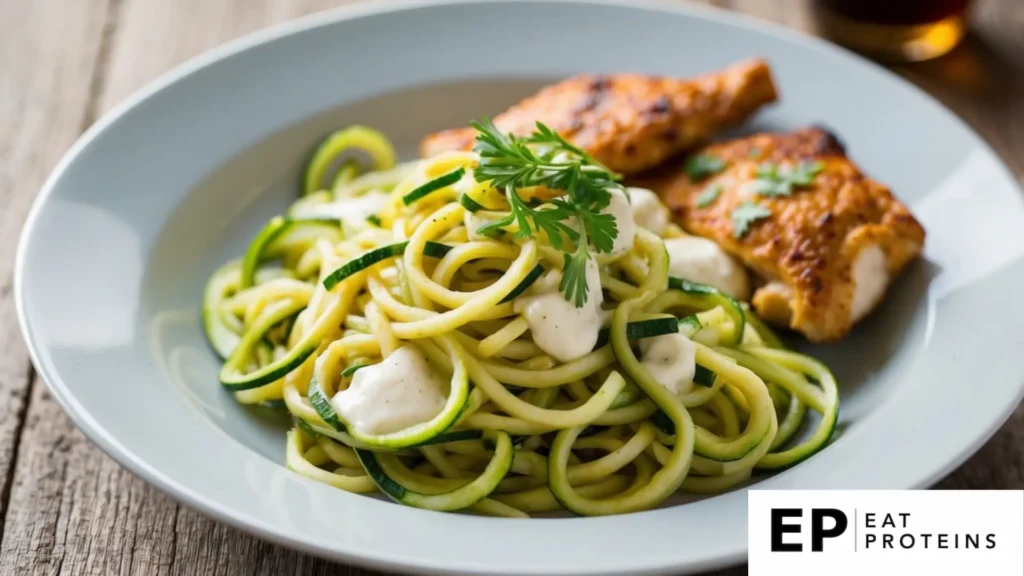
Zoodle Alfredo with Chicken is a tasty AIP-friendly dish. It uses zucchini noodles instead of pasta and a dairy-free Alfredo sauce.
This meal is easy to make. I can whip it up in about 30 minutes.
To start, I spiralize 2-3 medium zucchini to make the zoodles. Then I cook 1 pound of chicken breast in a pan for 6-8 minutes per side.
For the sauce, I blend 1 cup of coconut milk with 1/4 cup of nutritional yeast and some garlic. I heat this mixture in a pan for 5 minutes until it thickens.
I combine the zoodles, sliced chicken, and sauce in the pan. I cook it all together for 2-3 minutes.
This recipe is rich in nutrients and follows AIP guidelines. It’s a great option for those on an autoimmune protocol diet.
What Are the Benefits of the AIP Diet?
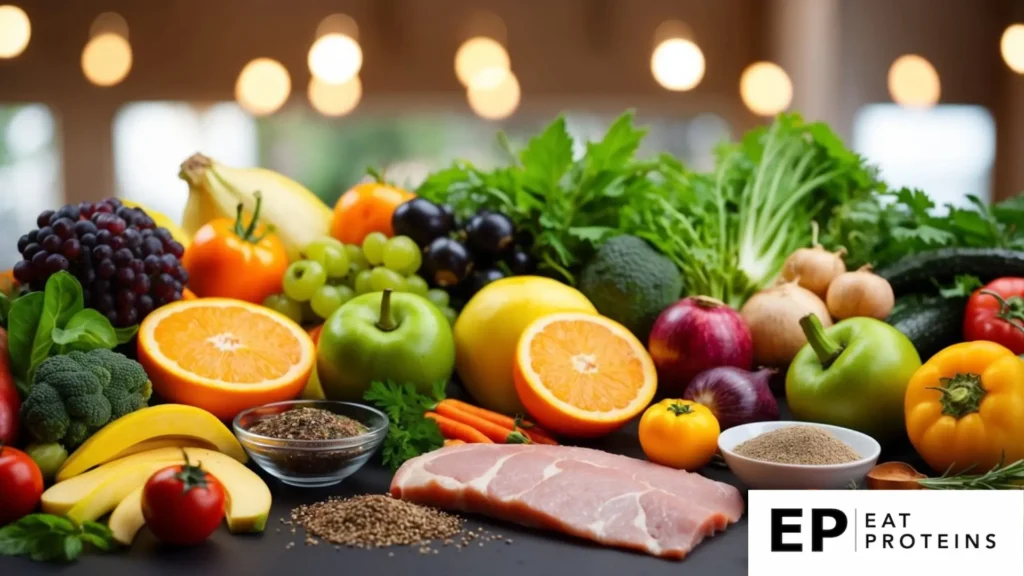
The AIP diet can help reduce inflammation and improve gut health. These benefits may lead to symptom relief for people with autoimmune conditions.
How Does the AIP Diet Help with Reducing Inflammation?
The AIP diet cuts out foods that can trigger inflammation in the body. I’ve found that this approach can be very helpful for managing autoimmune symptoms. The diet removes common inflammatory foods like grains, dairy, and processed foods.
Instead, it focuses on nutrient-dense options. These include leafy greens, colorful vegetables, and high-quality meats. By eating these foods, I’ve seen people reduce their inflammation levels.
This can lead to less pain, fatigue, and other symptoms. The diet also includes foods rich in omega-3 fatty acids. These fats have anti-inflammatory effects in the body.
How Can the AIP Diet Improve Gut Health?
The AIP diet puts a big focus on healing the gut. I’ve noticed it can really help people with digestive issues. The diet removes foods that can irritate the gut lining, like grains and legumes.
It adds in gut-friendly foods instead. These include bone broth, fermented vegetables, and organ meats. These foods provide nutrients that support gut healing.
A healthier gut can lead to better nutrient absorption. It may also help reduce inflammation throughout the body. Many people report less bloating, gas, and other digestive symptoms on the AIP diet.
What Are the Key Foods in the AIP Diet?
The AIP diet focuses on nutrient-dense foods that support healing and reduce inflammation. I’ll cover the most important vegetable and protein choices for this eating plan.
What Nutrient-Dense Vegetables Are Included in the AIP Diet?
Leafy greens are a top pick for the AIP diet. I recommend kale, spinach, and collard greens. These pack in vitamins A, C, and K. Cruciferous veggies like broccoli and cauliflower are also great choices. They contain compounds that may help reduce inflammation.
Root vegetables provide important carbs and fiber. Sweet potatoes, carrots, and beets are colorful options. They’re rich in antioxidants that support the immune system.
Squash varieties like butternut and acorn offer vitamin A and other nutrients. I suggest adding these to soups and roasted veggie medleys.
What Organic Protein Sources Are Recommended in the AIP Diet?
Wild-caught fish tops my list of AIP-friendly proteins. Salmon, sardines, and mackerel are high in omega-3 fatty acids. These fats help fight inflammation in the body.
Grass-fed meats are another good choice. Beef, lamb, and bison raised this way have better nutrient profiles. They contain more omega-3s and antioxidants than grain-fed options.
Pasture-raised poultry like chicken and turkey are lean protein sources. They provide essential amino acids for tissue repair and immune function.
Organ meats may not be popular, but they’re incredibly nutritious. Liver, heart, and kidney are rich in vitamins and minerals. I suggest trying them in small amounts to boost nutrient intake.
